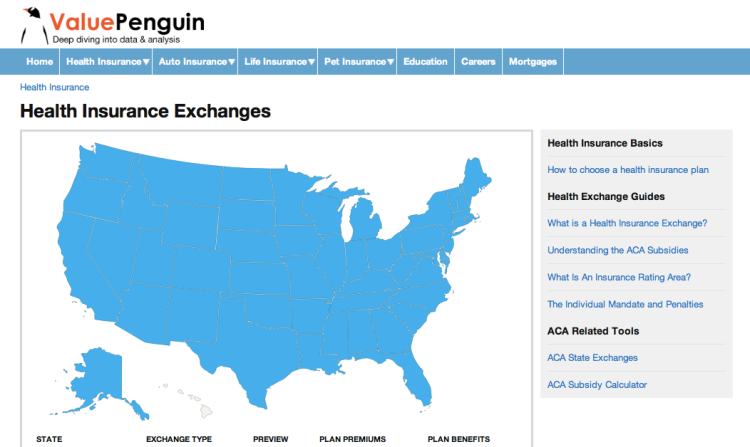Consumers shopping for health insurance typically conduct extensive research before making a decision. Individuals will visit websites multiple times, research doctors, and compare plans from multiple insurance companies.
One recent study of the Massachusetts healthcare reform experience found that consumers average 18 interactions before actually buying a plan.
The Affordable Care Act (ACA) online exchanges were created to help consumers easily compare their health insurance options. Given what policy experts knew about consumer behavior, I was surprised when marketplaces prevented people from browsing prices and plans anonymously.
This was further exacerbated by the infamous glitches, which are continuing to prevent thousands of Americans from seeing any insurance information altogether.
The problems with the federal website created a vacuum of information, and we sensed an opportunity.
Related: Read our full report on the challenges of relying on a “tech surge” to make improvements to HealthCare.gov.
Six months ago, we began a project at my startup Valuepenguin.com to figure out how the ACA would impact health insurance plans and premiums. The law would change many aspects of the individual market, and we had the same questions most consumers had. What would these new health insurance plans premiums cost, and how much would subsidies amount to?
The dialogue on the ACA at that point centered on “average” prices. Supporters claimed average prices would decrease with federal subsidies, while critics argued the opposite about average premiums — it all depended on selective usage of data. Average prices aren’t useful to people trying to determine their healthcare costs. We wanted to do better.
Our research revealed that the premium methodology used by insurance companies was publicly available in many states. With some digging you could calculate precise premiums and construct the makeup of a state exchange. Hundreds of regulatory rate filings and health insurance documents later, we built the first on-exchange health insurance plan comparisons in advance of open enrollment.
Two services we’ve relied upon heavily during development were Olark and Disqus. The live chat and feedback from our visitors allowed us to quickly assess ways we could enhance the information we were providing. Comments from users led us to clarify the definition of income, add language regarding Medicaid eligibility, as well as implement an option for a third child. This responsive and iterative process helped us optimize our tools with consumers in mind.
As the Oct. 1 open enrollment date approached, we were prepared to move onto other projects. We anticipated that consumers now having access to the prices and plan information directly on the exchanges would have little use for our tools.
On the contrary, as more and more attempts to access the federal exchange failed, more and more people were using our site to find plans and prices, estimate subsidies, and research benefits. Realizing the consumer needs that could still be filled, we shifted our priorities and focused on expanding our coverage to the rest of the 50 states. Within five days we expanded our offerings to include 49 of 50 states and data for over 2,500 plans.
Additional failures of the federal website to provide accurate and transparent information only further increased traffic. When Healthcare.gov finally introduced anonymous browsing, consumers could only see plan names and prices. Incredibly, even the listed prices were misleading, applying only to users who were 27 or 50 years old! As people began searching for additional details on the listed plans, they were arriving on our pages through Google. At the end of October, more than 6,500 daily visitors had found their way to our site.
Our experience has confirmed that shopping for healthcare is a complicated process. The public is hungry for any data it can get regarding the ACA plans. Our visitors have been equal parts supporter and critics. They all want simple answers as to what the ACA means for them. The government website has to this point failed in this objective. A few sites like ours have stepped in to fill the void.
Ultimately, the ACA will make some consumers happy and others dissatisfied. We continue to improve our tools with the goal of presenting accurate and comprehensive data that allow our users to draw their own conclusions. Hopefully. the exchanges will soon be improved and able to do the same.
 Jonathan Wu is CEO, Chief Analyst, and co-founder of ValuePenguin.com, a consumer finance website focusing on the impact of healthcare reform.
Jonathan Wu is CEO, Chief Analyst, and co-founder of ValuePenguin.com, a consumer finance website focusing on the impact of healthcare reform.

![Reblog this post [with Zemanta]](http://img.zemanta.com/reblog_e.png?x-id=8c354c1b-f880-4d19-95d6-61a694f428c7)

